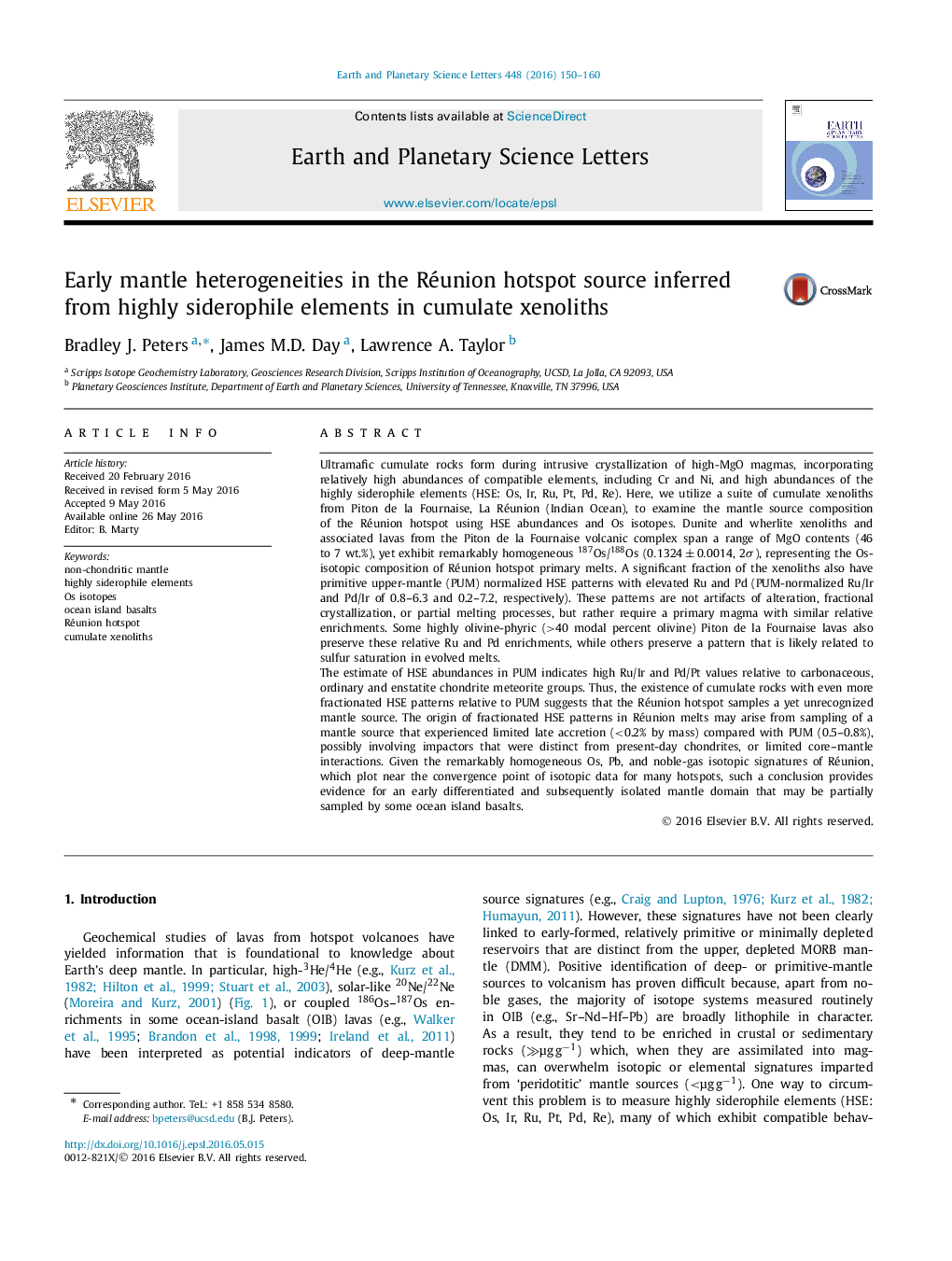| Article ID | Journal | Published Year | Pages | File Type |
|---|---|---|---|---|
| 4676926 | Earth and Planetary Science Letters | 2016 | 11 Pages |
•Réunion igneous rocks have highly fractionated HSE patterns not observed elsewhere.•Extremely consistent 187Os/188Os (0.1324±0.00140.1324±0.0014, 2σ) in Réunion mantle source.•Réunion mantle source formed early and is distinct from bulk silicate Earth.•Core–mantle interaction or non-chondritic late accretion are possible source models.
Ultramafic cumulate rocks form during intrusive crystallization of high-MgO magmas, incorporating relatively high abundances of compatible elements, including Cr and Ni, and high abundances of the highly siderophile elements (HSE: Os, Ir, Ru, Pt, Pd, Re). Here, we utilize a suite of cumulate xenoliths from Piton de la Fournaise, La Réunion (Indian Ocean), to examine the mantle source composition of the Réunion hotspot using HSE abundances and Os isotopes. Dunite and wherlite xenoliths and associated lavas from the Piton de la Fournaise volcanic complex span a range of MgO contents (46 to 7 wt.%), yet exhibit remarkably homogeneous 187Os/188Os (0.1324±0.00140.1324±0.0014, 2σ), representing the Os-isotopic composition of Réunion hotspot primary melts. A significant fraction of the xenoliths also have primitive upper-mantle (PUM) normalized HSE patterns with elevated Ru and Pd (PUM-normalized Ru/Ir and Pd/Ir of 0.8–6.3 and 0.2–7.2, respectively). These patterns are not artifacts of alteration, fractional crystallization, or partial melting processes, but rather require a primary magma with similar relative enrichments. Some highly olivine-phyric (>40 modal percent olivine) Piton de la Fournaise lavas also preserve these relative Ru and Pd enrichments, while others preserve a pattern that is likely related to sulfur saturation in evolved melts.The estimate of HSE abundances in PUM indicates high Ru/Ir and Pd/Pt values relative to carbonaceous, ordinary and enstatite chondrite meteorite groups. Thus, the existence of cumulate rocks with even more fractionated HSE patterns relative to PUM suggests that the Réunion hotspot samples a yet unrecognized mantle source. The origin of fractionated HSE patterns in Réunion melts may arise from sampling of a mantle source that experienced limited late accretion (<0.2% by mass) compared with PUM (0.5–0.8%), possibly involving impactors that were distinct from present-day chondrites, or limited core–mantle interactions. Given the remarkably homogeneous Os, Pb, and noble-gas isotopic signatures of Réunion, which plot near the convergence point of isotopic data for many hotspots, such a conclusion provides evidence for an early differentiated and subsequently isolated mantle domain that may be partially sampled by some ocean island basalts.
